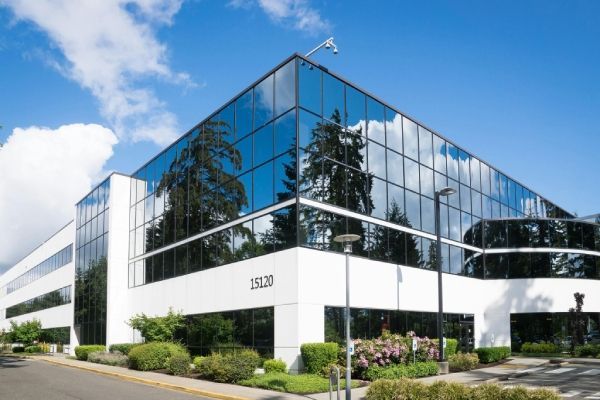Master Plumbers Blog
How Does Industrial or Commercial Plumbing Differ from Residential Plumbing?
Any residential, commercial, or industrial building requires a working plumbing system to make it habitable and hygienic. That being said, while taps, toilets, and hoses are commonplace in homes and workspaces, that doesn’t mean that all plumbing systems are made the same.
The plumbing needs of a commercial or industrial facility can be vastly different from those of a regular home. Understanding these distinctions is key to designing, installing, and maintaining plumbing systems that meet the unique requirements of each setting. It also explains why, if you’re having plumbing issues at home, it’s best to call residential plumbers Dunedin homeowners trust; meanwhile, if you’re dealing with industrial-level plumbing, then you need to call plumbers with the necessary expertise.
For your better understanding, let’s take a closer look at the key differences between residential and commercial-level plumbing systems below:


Size and Scale
Residential plumbing systems are typically designed to accommodate the needs of a single-family home or a small number of occupants. They involve simpler layouts and have fewer fixtures compared to their commercial or industrial counterparts. In contrast, commercial and industrial plumbing systems are larger and more complex. This is because these systems cater to the demands of multiple users (potentially at the same time) and extensive facilities.
The size and scale of commercial and industrial plumbing systems have significant implications for maintenance, repairs, or renovations. Given the larger footprint and higher usage rates, commercial and industrial facilities inevitably experience more frequent wear and tear on plumbing components, thus increasing maintenance needs. Moreover, any disruptions or downtime in plumbing systems can have a more significant impact on business operations or public services compared to residential settings.
Fixtures and Appliances
The standard plumbing fixtures and appliances commonly found in homes include sinks, toilets, showers, and bathtubs. These are designed for domestic use and are typically smaller in size and capacity. Meanwhile, commercial and industrial plumbing may involve a broader range of fixtures and appliances tailored to the specific needs of different industries and facilities.
For example, commercial kitchens may require industrial sinks, dishwashers, and grease traps to handle large volumes of food preparation and cleaning. Similarly, industrial facilities may have specialised equipment for processes such as manufacturing, research, or wastewater treatment, which necessitate unique plumbing configurations.
Water Pressure and Flow
To suit the needs of households, residential plumbing systems are typically designed to operate at lower water pressures and flow rates. These systems prioritise comfort, convenience, and water conservation while ensuring adequate supply for daily activities such as bathing, cooking, and cleaning. Commercial and industrial plumbing systems, on the other hand, often require higher water pressures and flow rates to meet the demands of multiple users, larger spaces, and specialised equipment.
The difference in water pressure and flow between these plumbing systems necessitates careful planning and design to ensure reliability and compliance with regulatory requirements. Professionals like engineers and
certified drainlayers must consider factors such as building size, occupancy levels, fixture types, and usage patterns when designing and installing plumbing systems for commercial and industrial properties. Additionally, regular maintenance, inspections, and adjustments are essential to monitor water pressure and optimise performance in commercial and industrial settings.

Building Codes and Regulations
Building codes and regulations dictate various aspects of plumbing design, installation, and safety to ensure the well-being of occupants and compliance with local regulations. Residential buildings, for instance, need to meet the regulatory requirements that are specific to single-family homes, apartments, or multi-unit dwellings.
The same can be said of commercial and industrial plumbing, though the specific codes that apply to these types of structures are quite different. For one, installations must adhere to more stringent codes and standards tailored to the unique requirements of commercial buildings, industrial facilities, and public spaces. These regulations encompass a wide range of considerations, including accessibility, safety, sanitation, and environmental protection.
Compliance with regulatory requirements is essential to obtain business permits, not to mention mitigate potential risks. Therefore, collaboration between architects, engineers, contractors, and plumbers is crucial to ensure that plumbing systems meet or exceed regulatory standards, all while addressing the specific needs and objectives of each project.
Material and Durability
Residential plumbing systems typically use standard-grade materials such as PVC, copper, or PEX for pipes and fixtures. These materials are chosen for their affordability, as well as ease of installation and durability in residential settings. Commercial and industrial plumbing, on the other hand, may require more robust materials such as stainless steel, cast iron, or specialised alloys. These can withstand higher usage rates, heavier loads, and harsher operating conditions. The selection of materials for commercial and industrial plumbing systems is critical to ensuring reliability and safety in diverse environments.
Factors such as temperature fluctuations, chemical exposure, and mechanical stress must be taken into account when choosing pipes, fittings, and fixtures for commercial and industrial applications. Additionally, regular maintenance and proactive repairs are essential to extend the lifespan of plumbing components in commercial and industrial settings. These will also help prevent costly downtime and potentially minimise the occurrence of emergencies.
Specialised Systems
Some commercial properties may require specialised plumbing systems tailored to their unique needs and operations. For example, restaurants need grease traps and industrial-grade dishwashers to handle food waste and sanitation requirements. Hospitals may require medical gas systems, sterile water supply, and infection control measures to ensure patient safety and regulatory compliance. Similarly, manufacturing facilities may rely on process piping, industrial wastewater treatment, and hazardous materials handling systems to support production processes and environmental stewardship goals.
The design, installation, and maintenance of specialised plumbing systems in commercial settings require expertise, certifications, and equipment. Plumbers and engineers working in these sectors must have a deep understanding of industry-specific regulations as well as best practices and emerging technologies to deliver solutions that meet the unique needs and challenges of each client. Collaboration between stakeholders, including facility managers, regulatory agencies, and industry associations, is essential to ensure that commercial-level plumbing systems are operated and maintained effectively.
While residential plumbing and commercial plumbing share common principles and objectives, they differ significantly in terms of size, scale, complexity, and functionality. Understanding these differences is essential for maintaining plumbing systems that meet the unique requirements of each setting.





